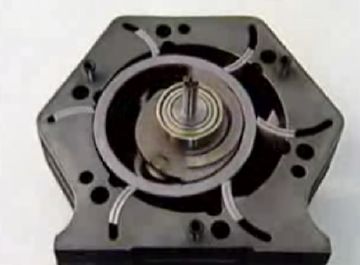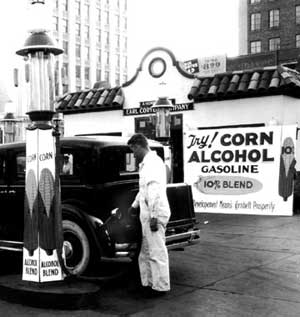Archive for the 'Transportation' Category
Another Air Power Innovation

EngineAir, of Melborne, Australia has invented a 13kg rotary air motor that will replace traditional combustion engines. Unlike the ZPM approach of using a standard piston/cylinder setup, this is a departure from traditional automotive engine design (Mazda’s combustion rotary engine has been around for awhile, but it’s far from mainstream.) This breakthrough was made by Angelo Di Pietro in 1997.
Unlike other companies, EngineAir doesn’t seem to have secured significant funding and thus has not published a production schedule for vehicles using their technology. However, if compressed air is going to be viable as a fuel, it seems to us that an approach like EngineAir’s design is more likely to be the longer-term solution than simply repurposing the cylinder/piston design.
One Air Car

Zero Pollution Motors is designing a set of air powered cars for release in the US. That’s right, these vehicles use compressed air (and at speeds over 35mph, small amounts of fuel mixed with compressed air) to power a 6 seat vehicle over 800 miles on 8 gallons of fuel plus the compressed air. The air is stored in on-board carbon fiber tanks that have the tendency to rip rather than explode on impact. This is important as the pressure being held in each vessel is in excess of 300 bar. Wow. That’s going to be tough to handle!
ZPM has been garnering a bunch of press lately on the heels of their recent announcement with Tata Motors of India. An interesting concept to be sure.
Green DIY Electric Motorcycle
We thought highlighting a “green motorcycle” would be a great way to celebrate St. Patrick’s Day. Watch the video below to see an interesting project (the music is a little over the top, you might turn down the volume if that sort of thing bothers you.)
This is a great project and a great way to recycle old vehicles. We love to see activities like these as it provides some hope that people will actually find ways to help innovate out of our present crisis, dependency on foreign energy. Think of a local transport like this charged in a distributed manner…that could be very high impact. Now, if an individual can do this for less than $3,000, why can’t a vehicle manufacturer pull it off?
- D&D SepEx Motor (about 45 ft-pd torque at 2000rpm)
- 400 Amp Alltrax Controller with PC link
- Four 12 volt deep cycle marine batteries (Wal-Mart)
- Four on-board battery chargers
- 6:1 gear ratio
The bike has a top speed of 45mph and a range of about 30 miles. Operating cost appears to be in the range of $0.02/mile.
2 comments
A Live Tesla
Last night, one of our partners was in Palo Alto for an unrelated event and bumped into a real, live Tesla on the street. Apparently, there was some sort of Tesla party at the Blue Chalk Cafe – it was quite the event. But it was nothing compared to the car, wow. It’s compact, it’s sleek, and we want one. For your viewing enjoyment, here’s a picture of a live production Tesla Coupe.

Corn Ethanol Economics
The Oil Drum did a great analysis of the economics of ethanol derived from corn as the feedstock yesterday. Read the article, it’s very well done. I’ll steal the punch line, on average at present ethanol prices (production and sale) there is a 7% margin on the product. That’s right, 7%. It’s awfully tough to make a living on 7% unless you’re moving massive volumes.

Does this mean ethanol is dead? No, not at all for a few reasons. First, the prices for ethanol sale move as do the corn feedstock prices. At $5/bushel of corn, that means the feedstock price for ethanol is $1.30/gallon (net of the $0.55/gal recovery from the resale of distillation byproducts.) In a certain sense, corn ethanol’s challenges today are a direct result of its early success – the more demand there is for the feedstock, the higher the price goes, corn has doubled in price the past couple of years.
Second, even with the current tough economics, the money spent in the production and consumption of ethanol is staying in the US vs. being shipped to OPEC countries, this is a net positive and it seems likely that government regulations will favor domestic ethanol production in upcoming energy policy decisions.
Finally, technology associated with alternate feedstocks, (i.e., cellulosic ethanol) is advancing at a pretty fast clip. When the science is able to be applied at scale against a feedstock like switchgrass where there is no competing food demand, the feedstock price should go down dramatically and perform more predictably (although there will be a premium paid in higher capital costs to build these plants it appears.)
It’s clear given the situation in Brazil that ethanol economics can work at scale, but the right approach must be employed. The biofuel market may be in a trough, but it’s likely a temporary situation.








